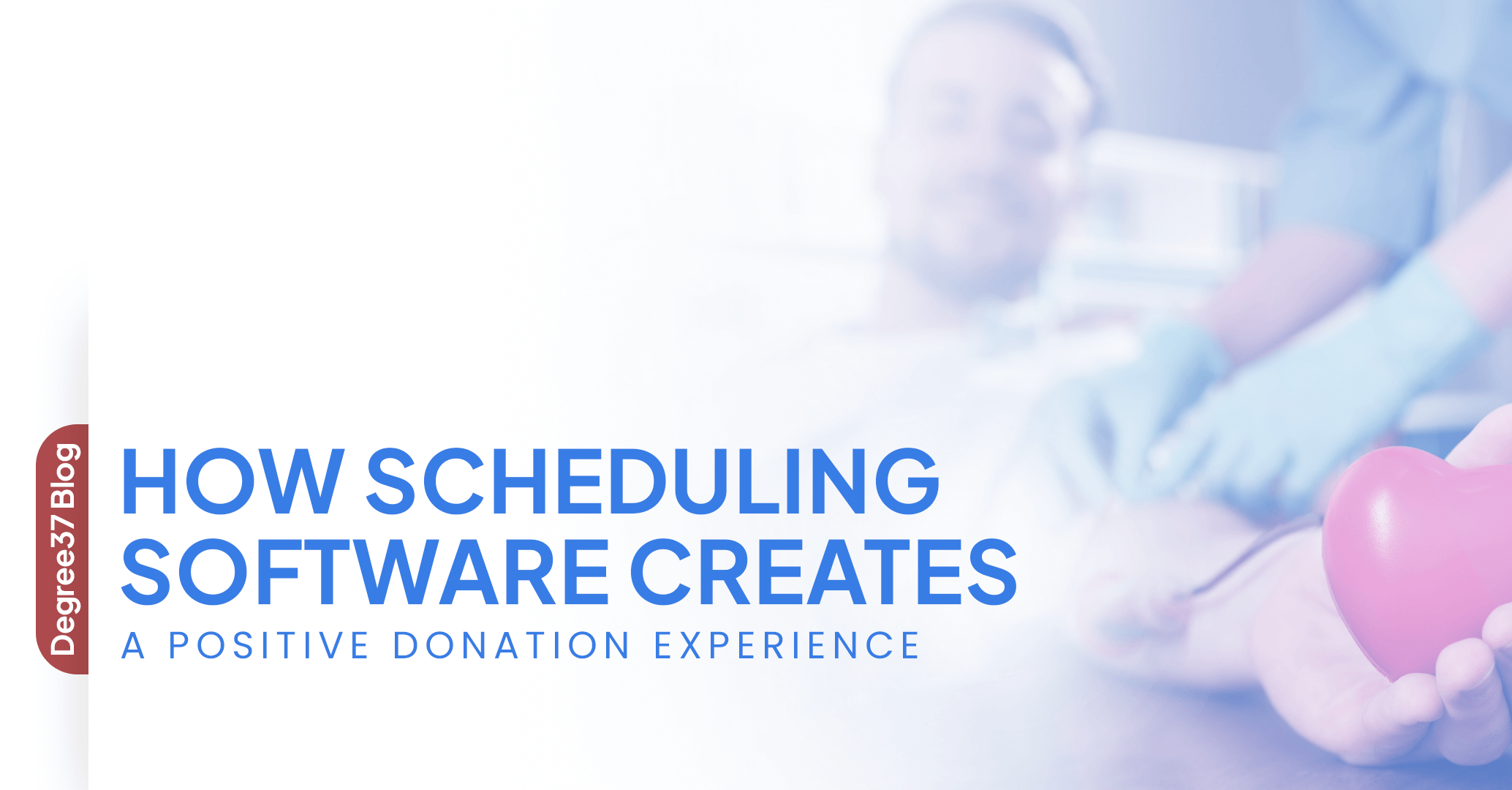Donor retention is a crucial aspect of blood center management, as it directly impacts the overall success of blood donation programs. Effective donor retention strategies can significantly boost the number of repeat donors, leading to a more stable and reliable blood supply. In this blog post, we will explore how scheduling software can play a vital role in creating a positive donation experience, ultimately increasing donor retention.
Understanding Donor Retention
Before getting into the specifics of scheduling software, it’s important to understand what donor retention entails. Donor retention refers to the ability of a blood donation center to keep donors coming back to give blood regularly. High donor retention rates ensure a steady supply of blood and reduce the need for frequent donor recruitment drives. Retaining donors is more cost-effective and efficient than constantly seeking new donors, and it helps to build a reliable and committed donor base.
The Challenges of Donor Retention
Blood donation centers face several challenges in retaining donors. Some of the common issues include:
Inconvenient Scheduling: Donors often find it difficult to align their schedules with available donation slots.
Lack of Communication: Inadequate communication and follow-up can make donors feel undervalued and forgotten.
Negative Donation Experience: Long wait times, confusing processes, and unfriendly staff can deter donors from returning.
Low Awareness: Donors may not be aware of the need for their specific blood type or the impact of their donations.
How Scheduling Software Improves Donor Retention
Scheduling software addresses many challenges by streamlining the donation process and enhancing the donor experience. Here are some are some keyways in which scheduling software can help increase donor retention:
1. Convenient and Flexible Scheduling
One of the primary benefits of scheduling software is that it allows donors to choose donation times that fit their busy schedules. Donors can easily view available slots, select their preferred time, and even reschedule if necessary. This flexibility reduces the likelihood of missed appointments and encourages donors to return for future donations.
2. Automated Reminders and Notifications
Scheduling software can send automated reminders and notifications to donors, ensuring they don’t forget their appointments. These reminders can be sent via email, SMS, or mobile app notifications, making it easy for donors to stay informed and committed. Automated follow-ups can also be sent to thank donors and encourage them to schedule their next donation.
3. Enhanced Communication
Effective communication is crucial for donor retention. Scheduling software can help blood donation centers maintain regular contact with donors. Personalized messages, updates on blood shortages, and information about upcoming donation drives can be easily shared. This ongoing communication keeps donors engaged and aware of the continuous need for their donations.
4. Streamlined Check-In Process
Long wait times and complicated check-in procedures can create a negative donation experience. Scheduling software can streamline the check-in process by allowing donors to complete necessary forms and health questionnaires online before their appointment. This reduces wait times and ensures a smoother, more efficient donation process.
5. Data Management and Analytics
Scheduling software provides valuable data management and analytics capabilities. Blood donation centers can track donor behavior, identify patterns, and understand what motivates donors to return. This data can be used to create targeted retention strategies, such as personalized donation requests or special incentives for frequent donors.
6. Improved Donor Experience
Overall, scheduling software enhances the donor experience by making the process more convenient, efficient, and enjoyable. When donors have a positive experience, they are more likely to return and recommend the donation center to others. Happy donors are also more likely to become advocates, spreading the word about the importance of blood donation.
A practical example of the impact of scheduling software can be seen in the use of Blood Center Scheduling Software. This software not only streamlines scheduling but also integrates with donor management systems to provide a comprehensive solution for blood donation centers. By leveraging such software, centers can ensure that they are offering the best possible experience to their donors, thereby increasing retention rates.
Implementing Scheduling Software in Your Blood Donation Center
If you’re considering implementing scheduling software in your blood donation center, here are some steps to get started:
1. Assess Your Needs
Begin by assessing your current donor retention rates and identifying the areas where scheduling software can have the most impact. Consider factors such as appointment scheduling, communication, and check-in processes.
2. Choose the Right Software
Select a scheduling software solution that meets your specific needs. Look for features such as automated reminders, online booking, data analytics, and integration with your existing donor management systems.
3. Train Your Staff
Ensure that your staff is well-trained in how to use the new scheduling software. Provide comprehensive training sessions and resources to help them understand the system’s features and benefits.
4. Promote the New System
Inform your donors about the new scheduling software and its benefits. Use email, social media, and in-center signage to promote the new system and encourage donors to use it for their next appointment.
5. Monitor and Adjust
Continuously monitor the performance of the scheduling software and gather feedback from donors and staff. Use this feedback to make necessary adjustments and improvements to the system.
Increasing donor retention is essential for maintaining a stable and sufficient blood supply. Scheduling software plays a crucial role in creating a positive donation experience, making it easier for donors to schedule appointments, receive reminders, and stay engaged with the donation center. By implementing scheduling software, blood donation centers can streamline their processes, enhance communication, and ultimately increase donor retention rates. As we’ve seen with the use of Blood Center Management Software, the right technology can make a significant difference in donor retention and overall blood donation center success.
Incorporating scheduling software is not just a technological upgrade; it’s a strategic move towards building a committed and reliable donor base, ensuring that every drop of blood counts towards saving lives.
